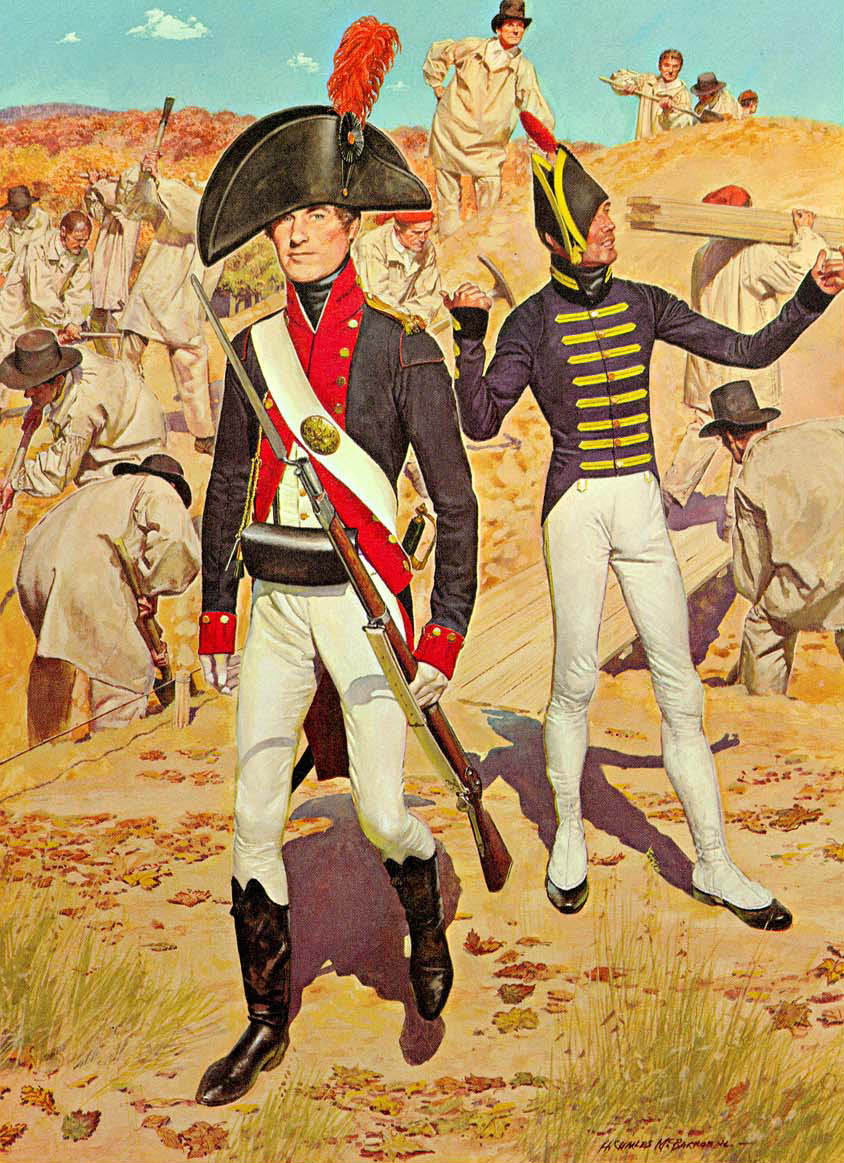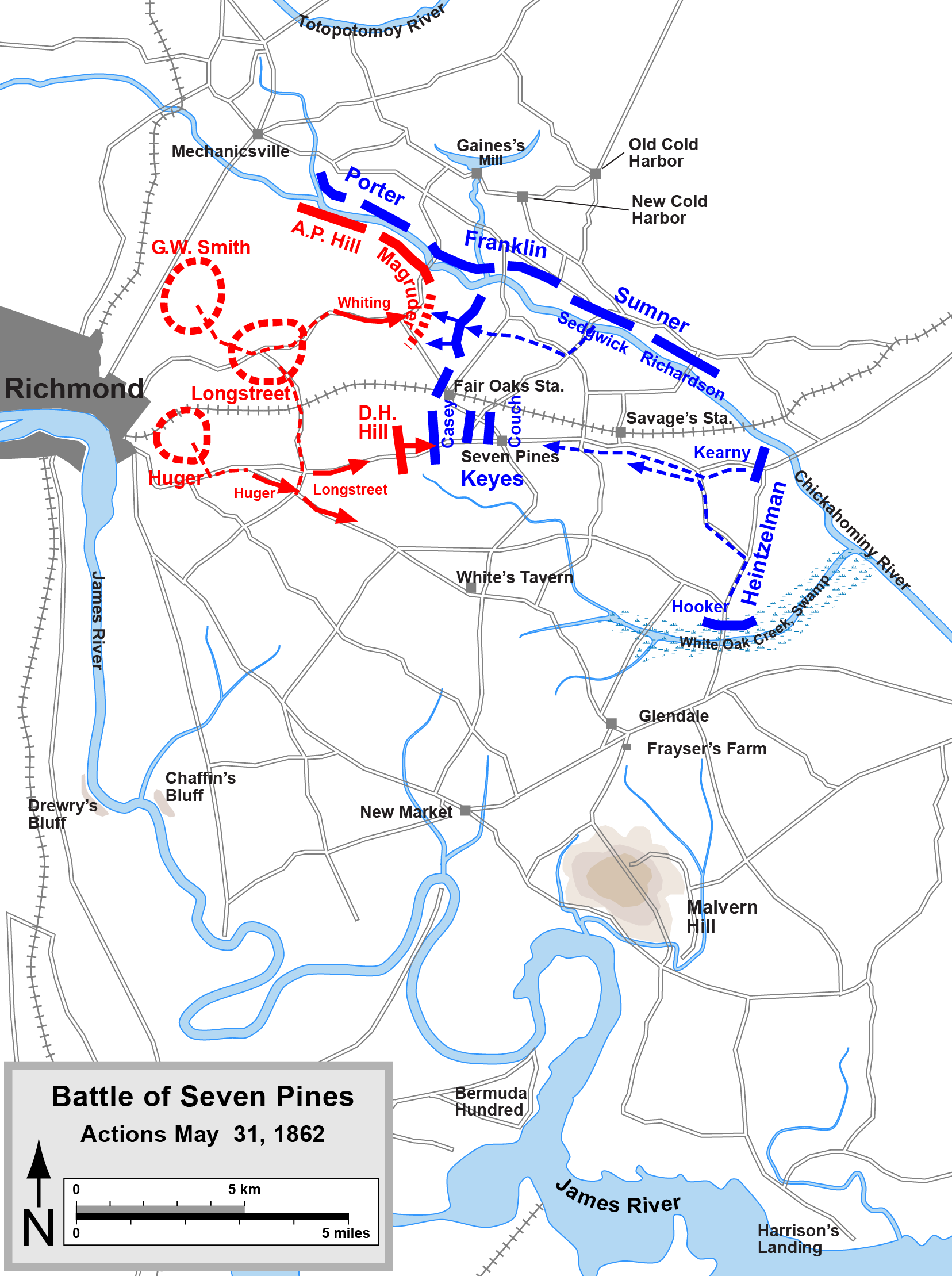|
Joseph E. Johnston
Joseph Eggleston Johnston (February 3, 1807 – March 21, 1891) was an American military officer who served in the United States Army during the Mexican–American War (1846–1848) and the Seminole Wars. After Virginia declared secession from the United States, he entered the Confederate States Army as one of its most senior general officers during the American Civil War. From 1888 to 1889 he was a vice president, from 1889 to 1890 president, of the Aztec Club of 1847. Johnston was trained as a civil engineer at the United States Military Academy at West Point, New York, graduating in the same class as Robert E. Lee. He served in Florida, Texas, and Kansas. By 1860 he achieved the rank of brigadier general as Quartermaster General of the U.S. Army. Johnston's effectiveness in the American Civil War was undercut by tensions with Confederate president Jefferson Davis. Victory eluded him in most campaigns he personally commanded. He was the senior Confederate commander at the ... [...More Info...] [...Related Items...] OR: [Wikipedia] [Google] [Baidu] |
Farmville, Virginia
Farmville is a town in Prince Edward County, Virginia, Prince Edward and Cumberland County, Virginia, Cumberland counties in the U.S. state, Commonwealth of Virginia. It is the county seat of Prince Edward County, Virginia, Prince Edward County. The population was 7,473 at the United States Census 2020, 2020 census. It was in a major tobacco growing area. Coal mining and brick making also occurred in the area. Farmville developed near the headwaters of the Appomattox River in central Virginia; the waterway was long its main transportation access to other markets. In the 19th century, a railroad was constructed here. Since the late 20th century, the former railway has been converted to the High Bridge Trail State Park, a more than rail trail park. U.S. Route 15 in Virginia, US 15, Virginia State Route 45, VA 45 and U.S. Route 460 in Virginia, US 460 now intersect at Farmville. The town is the home of Longwood University and is the town nearest to Hampden–Sydney College. Hist ... [...More Info...] [...Related Items...] OR: [Wikipedia] [Google] [Baidu] |
Mexican–American War
The Mexican–American War (Spanish language, Spanish: ''guerra de Estados Unidos-México, guerra mexicano-estadounidense''), also known in the United States as the Mexican War, and in Mexico as the United States intervention in Mexico, (April 25, 1846 – February 2, 1848) was an invasion of Second Federal Republic of Mexico, Mexico by the United States Army. It followed the 1845 American annexation of Texas, which Mexico still considered its territory because it refused to recognize the Treaties of Velasco, signed by President Antonio López de Santa Anna after he was captured by the Texian Army during the 1836 Texas Revolution. The Republic of Texas was ''de facto'' an independent country, but most of its Anglo-American citizens who had moved from the United States to Texas after 1822 wanted to be annexed by the United States. Sectional politics over slavery in the United States had previously prevented annexation because Texas would have been admitted as a slave state ... [...More Info...] [...Related Items...] OR: [Wikipedia] [Google] [Baidu] |
Virginia
Virginia, officially the Commonwealth of Virginia, is a U.S. state, state in the Southeastern United States, Southeastern and Mid-Atlantic (United States), Mid-Atlantic regions of the United States between the East Coast of the United States, Atlantic Coast and the Appalachian Mountains. The state's List of capitals in the United States, capital is Richmond, Virginia, Richmond and its most populous city is Virginia Beach, Virginia, Virginia Beach. Its most populous subdivision is Fairfax County, Virginia, Fairfax County, part of Northern Virginia, where slightly over a third of Virginia's population of more than 8.8million live. Eastern Virginia is part of the Atlantic Plain, and the Middle Peninsula forms the mouth of the Chesapeake Bay. Central Virginia lies predominantly in the Piedmont (United States), Piedmont, the foothill region of the Blue Ridge Mountains, which cross the western and southwestern parts of the state. The fertile Shenandoah Valley fosters the state's mo ... [...More Info...] [...Related Items...] OR: [Wikipedia] [Google] [Baidu] |
United States Military Academy
The United States Military Academy (USMA), commonly known as West Point, is a United States service academies, United States service academy in West Point, New York that educates cadets for service as Officer_(armed_forces)#United_States, commissioned officers in the United States Army. The academy was founded in 1802, and it is the oldest of the five United States service academies, American service academies. The Army has occupied the site since establishing a fort there in 1780 during the American Revolutionary War, as it sits on strategic high ground overlooking the Hudson River north of New York City. West Point's academic program grants the Bachelor of Science degree with a curriculum that grades cadets' performance upon a broad academic program, military leadership performance, and mandatory participation in competitive athletics. Candidates for admission must apply directly to the academy and receive a nomination, usually from a member of United States Congress, Congr ... [...More Info...] [...Related Items...] OR: [Wikipedia] [Google] [Baidu] |
Battle Of Bentonville
The Battle of Bentonville (March 19–21, 1865) was fought in Johnston County, North Carolina, near the village of Bentonville, as part of the Western Theater of the American Civil War, Western Theater of the American Civil War. It was the last battle between the western field armies of William Tecumseh Sherman, William T. Sherman and Joseph E. Johnston. As the right wing of Sherman's army under command of Maj. Gen. Oliver Otis Howard, Oliver O. Howard marched toward Goldsboro, North Carolina, Goldsborough, the left wing under command of Maj. Gen. Henry Warner Slocum, Henry W. Slocum encountered the entrenched men of Johnston's army. On the first day of the battle, the Confederates attacked the XIV Corps (Union Army), XIV Corps and routed two divisions, but the rest of Sherman's army defended its positions successfully. The next day, as Sherman sent reinforcements to the battlefield and expected Johnston to withdraw, only minor sporadic fighting occurred. On the third day, as sk ... [...More Info...] [...Related Items...] OR: [Wikipedia] [Google] [Baidu] |
Vicksburg Campaign
The Vicksburg campaigns were a series of maneuvers and battles in the Western Theater of the American Civil War directed against Vicksburg, Mississippi, a fortress city that dominated the last Confederate-controlled section of the Mississippi River. The Union Army of the Tennessee under Major General Ulysses S. Grant gained control of the river by capturing this stronghold and defeating Lieutenant General John C. Pemberton's forces stationed there. The campaign consisted of many important naval operations, troop maneuvers, failed initiatives, and eleven distinct battles from December 26, 1862, to July 4, 1863. Military historians divide the campaign into two formal phases: operations against Vicksburg (December 1862 – January 1863) and Grant's operations against Vicksburg (March–July 1863). Grant initially planned a two-pronged approach in which half of his army, under Maj. Gen. William Tecumseh Sherman, would advance to the Yazoo River and attempt to reach Vicksburg ... [...More Info...] [...Related Items...] OR: [Wikipedia] [Google] [Baidu] |
Battle Of Seven Pines
The Battle of Seven Pines, also known as the Battle of Fair Oaks or Fair Oaks Station, took place on May 31 and June 1, 1862, in Henrico County, Virginia as part of the Peninsula Campaign of the American Civil War. The Union's Army of the Potomac, commanded by Maj. Gen. George B. McClellan, had moved up the Virginia Peninsula, reaching the outskirts of Richmond, the Confederate capital. On May 31, Confederate General Joseph E. Johnston attempted to overwhelm two Federal corps that appeared isolated south of the Chickahominy River. The Confederate assaults, although poorly coordinated, succeeded in driving back the IV Corps and inflicting heavy casualties. Reinforcements arrived, and both sides fed more and more troops into the action. Supported by the III Corps and Maj. Gen. John Sedgwick's division of Maj. Gen. Edwin V. Sumner's II Corps (which crossed the rain-swollen river on Grapevine Bridge), the Federal position was finally stabilized. Gen. Johnston was serio ... [...More Info...] [...Related Items...] OR: [Wikipedia] [Google] [Baidu] |
Siege Of Yorktown (1862)
The Battle of Yorktown or siege of Yorktown was fought from April 5 to May 4, 1862, as part of the Peninsula Campaign of the American Civil War. Marching from Fort Monroe, Union Army, Union Major general (United States), Maj. Gen. George B. McClellan's Army of the Potomac encountered Maj. Gen. John B. Magruder's small Confederate States Army, Confederate force at Yorktown, Virginia, Yorktown behind the Warwick Line. McClellan suspended his march up the Peninsula toward Richmond, Virginia, Richmond and settled in for siege operations. On April 5, the IV Corps (Union Army), IV Corps of Brigadier general (United States), Brig. Gen. Erasmus D. Keyes made initial contact with Confederate defensive works at Lee's Mill, an area McClellan expected to move through without resistance. Magruder's ostentatious movement of troops back and forth convinced the Union that his works were strongly held. As the two armies fought an artillery duel, reconnaissance indicated to Keyes the strength and ... [...More Info...] [...Related Items...] OR: [Wikipedia] [Google] [Baidu] |
Peninsula Campaign
The Peninsula campaign (also known as the Peninsular campaign) of the American Civil War was a major Union operation launched in southeastern Virginia from March to July 1862, the first large-scale offensive in the Eastern Theater. The operation, commanded by Major General George B. McClellan, was an amphibious turning movement against the Confederate States Army in Northern Virginia, intended to capture the Confederate capital of Richmond. Despite the fact that Confederate spy Thomas Nelson Conrad had obtained documents describing McClellan's battle plans from a double agent in the War Department, McClellan was initially successful against the equally cautious General Joseph E. Johnston, but the emergence of the more aggressive General Robert E. Lee turned the subsequent Seven Days Battles into a humiliating Union defeat. McClellan landed his army at Fort Monroe and moved northwest, up the Virginia Peninsula. Confederate Brigadier General John B. Magruder's def ... [...More Info...] [...Related Items...] OR: [Wikipedia] [Google] [Baidu] |
First Battle Of Bull Run
The First Battle of Bull Run, called the Battle of First Manassas . by Confederate States Army, Confederate forces, was the first major battle of the American Civil War. The battle was fought on July 21, 1861, in Prince William County, Virginia, just north of what is now the city of Manassas, Virginia, Manassas and about thirty miles west-southwest of Washington, D.C. The Union Army was slow in positioning themselves, allowing Confederate reinforcements time to arrive by rail. Each side had about 18,000 poorly trained and poorly led troops. The battle was a Confederate victory and was followed by a disorganized post-battle retreat of the Union forces. Just months after the start of the war at Battle of Fort Sumter, Fort Sumter, the northern public clamored for a march against the Confederate capital of Richmond, Virginia, whic ... [...More Info...] [...Related Items...] OR: [Wikipedia] [Google] [Baidu] |










